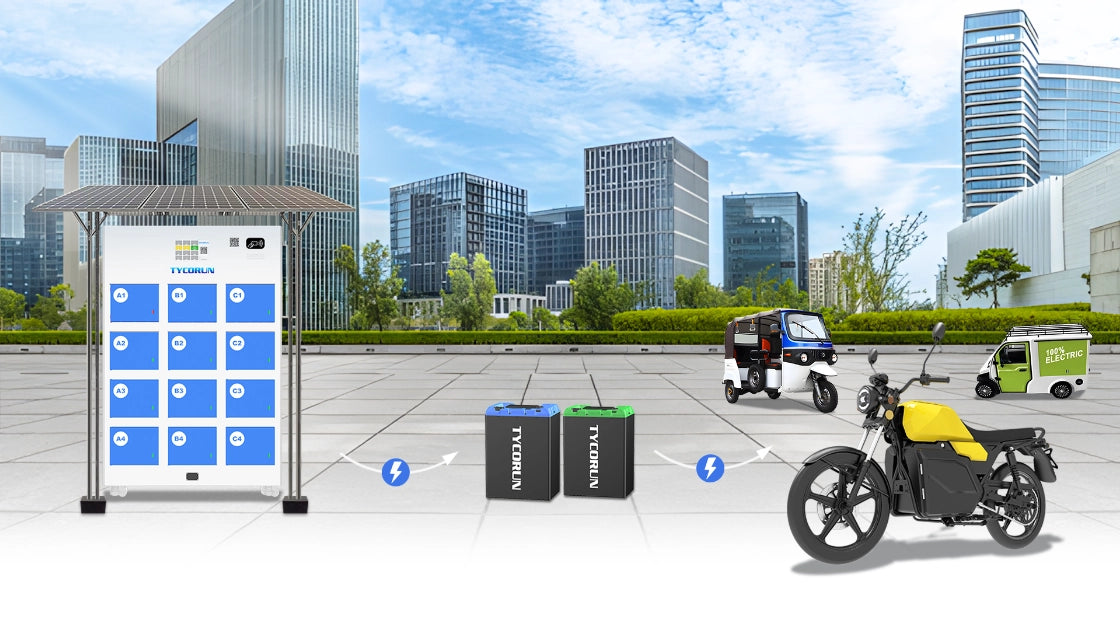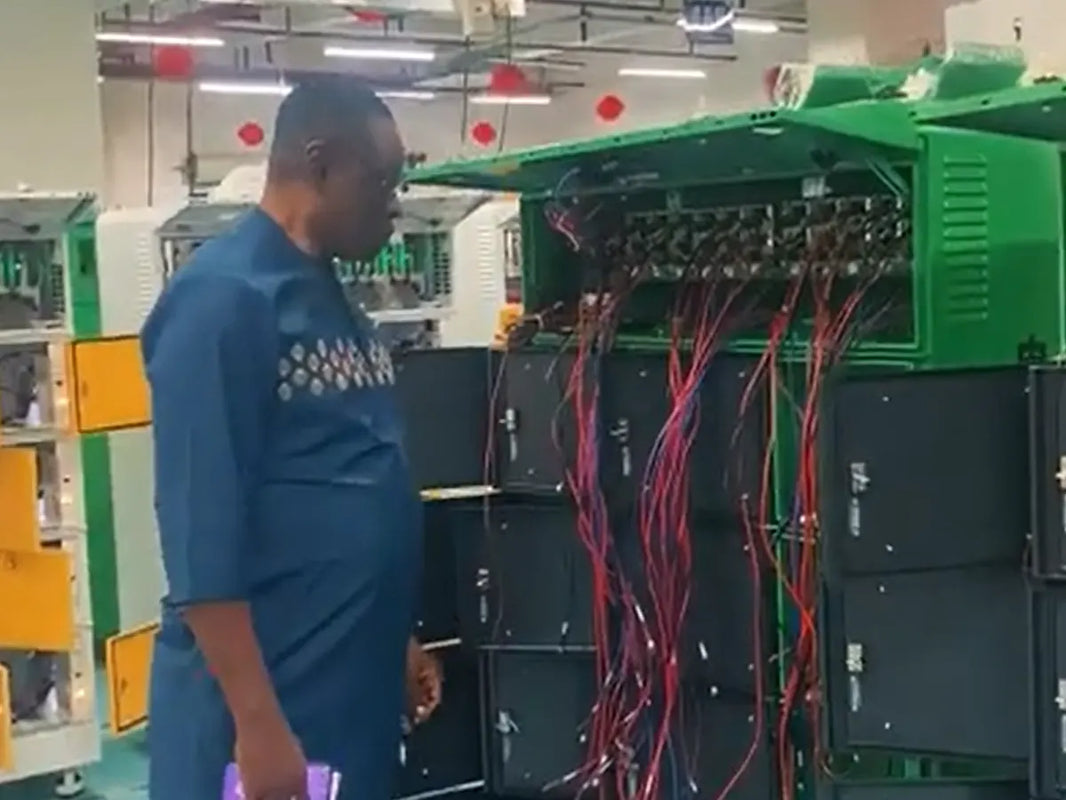Lithium batteries power much of the modern world — from smartphones and laptops to electric vehicles and solar energy systems. They’re reliable, efficient, and long-lasting, but even the best lithium battery doesn't last forever. Over time, every lithium cell goes through a natural process of decline known as lithium battery aging.
This guide will help you understand what happens during that lithium battery aging process, what causes it, how it affects battery performance, and most importantly, what you can do to slow it down and extend your battery’s lifespan.

Main content:
What Does Lithium Battery Aging Really Mean?

In simple terms, lithium battery aging refers to the gradual decline in a battery’s performance and battery capacity as it is used or stored over time. Just like how humans age, lithium batteries also “wear out” after continuous use.
When a lithium battery is new, it can store a specific amount of energy and deliver it efficiently. But as time passes, you may notice your phone needing more frequent charging, or your electric vehicle not covering as many miles as before — that’s a clear sign of lithium battery aging in action.
Several visible and invisible changes take place inside the battery during this process. These include:
- A drop in the total charge it can hold (capacity loss).
- A rise in internal resistance, which leads to heating and lower efficiency.
- Slower charging and reduced power output.
- In severe cases, swelling or leakage due to internal chemical breakdown.
Read: Battery internal resistance
While lithium battery aging is a normal process, understanding what causes it can help you delay it significantly.
Main Causes Behind Lithium Battery Aging
Lithium battery aging doesn’t happen overnight or from one single reason. It’s usually the result of many small factors that build up over time. Here are the most common contributors to this gradual decline.
1. Repeated Charging and Discharging (Cycle Aging)
Every time you charge and discharge your battery, lithium ions move back and forth between the positive and negative electrodes. Over many cycles, this movement causes physical and chemical wear inside the battery.
For example:
- On the anode (negative side), graphite particles can crack as lithium ions repeatedly enter and exit. This makes it harder for the battery to store energy efficiently.
- On the cathode (positive side), materials can lose their structural integrity, reducing their ability to release energy.
- The SEI film (solid electrolyte interface), a protective layer that forms naturally, thickens over time and consumes active lithium, reducing the total capacity.
This slow internal damage means the battery won’t perform like new after hundreds of cycles — a typical symptom of lithium battery aging.
2. Calendar Aging (Time-Based Degradation)
Even if a battery isn’t used regularly, it still ages while sitting on a shelf or inside a device. This is called calendar aging, and it happens because of small, ongoing chemical reactions inside the cell.

The main reasons include:
- Self-discharge: The battery loses energy slowly, even when not in use.
- Electrolyte decomposition: The liquid inside the battery breaks down gradually, creating gases or unwanted compounds.
- Material corrosion: Internal components react with moisture or oxygen over time.
Environmental factors, such as temperature and humidity, can make lithium battery aging much faster even during storage.
3. Extreme Temperatures
Temperature is one of the biggest enemies of lithium batteries.
- High heat accelerates unwanted chemical reactions, speeds up SEI film growth, and increases internal pressure — all of which reduce battery life.
- Extreme cold slows down the movement of lithium ions, reducing battery performance and sometimes causing permanent damage when charging in freezing conditions.
Keeping your device or EV battery in a stable, moderate environment is one of the easiest ways to reduce lithium battery aging.
4. Overcharging and Deep Discharging
Charging your battery to 100% or letting it drop to 0% might feel normal, but it puts stress on the internal materials.
- Overcharging increases voltage and heat, which can trigger electrolyte breakdown or gas formation.
- Deep discharging (using all the battery’s energy) can lead to irreversible chemical reactions that permanently reduce capacity.
For better battery health and slower lithium battery aging, it’s best to keep the charge between 20% and 80% most of the time.
5. Fast Charging and High Current Loads
While fast charging is convenient, it creates more heat and pressure inside the battery. Repeated exposure to high currents can degrade electrodes faster and cause uneven lithium deposition.
Similarly, drawing high currents (like rapid acceleration in electric vehicles or heavy gaming on phones) increases internal temperature and speeds up lithium battery aging.
6. Poor Battery Management System (BMS)
Modern lithium batteries include a Battery Management System (BMS) to control voltage, current, and temperature. If the BMS malfunctions or lacks proper calibration, the battery may overheat or overcharge — leading to faster wear and potential safety risks.
A reliable BMS helps prevent many of the issues that lead to lithium battery aging, making it an essential part of battery protection.
Check this Lithium ion battery overcharge for more insight.
How Lithium Battery Aging Impacts Performance
The effects of lithium battery aging go beyond just shorter runtime. Here’s how it affects your device or vehicle’s performance in real-life use:

- Reduced Capacity
As a battery ages, it simply can’t hold as much energy as before. This means fewer hours of phone use, shorter EV driving range, or less backup time in solar power systems.
- Slower Charging and Power Output
With increased internal resistance, the battery becomes less efficient. You may notice longer charging times or weaker power delivery under heavy use.
- More Heat and Safety Risks
Aging batteries tend to generate more heat. If ignored, severe lithium battery aging can cause internal short circuits, swelling, or even thermal runaway — which can lead to fire or explosion in rare cases.
- Frequent Replacements
As performance drops, users are forced to replace batteries more often. This not only increases costs but also adds environmental waste if old cells are not recycled properly.
Tips to Slow Down Lithium Battery Aging
Although aging can’t be stopped completely, smart habits can greatly extend your battery’s lifespan. Here’s what you can do.

1. Practice Smart Charging Habits
- Avoid full charges and discharges: Keep the charge between 20% and 80%.
- Unplug once charged: Don’t leave devices plugged in overnight.
- Use the original charger: A charger designed for your device ensures the correct voltage and current.
- Choose slow charging when possible: Fast charging is useful occasionally but shouldn’t be your daily routine.
Consistent smart charging can noticeably reduce lithium battery aging over time.
2. Keep Batteries Cool
- Always store and use your devices in well-ventilated, moderate-temperature environments.
- Avoid leaving electronics in cars under sunlight.
- Keep EVs parked in shaded areas or garages during hot weather.
- Don’t charge in extremely cold or hot conditions.
Temperature control is one of the most effective ways to delay lithium battery aging naturally.
3. Avoid Long-Term Inactivity
If you plan to store a lithium battery for months, don’t keep it fully charged or completely empty. The ideal storage level is around 50–60% charge. (Read how to store batteries)
Also, recharge it slightly every few months to maintain stability. This helps prevent calendar-related lithium battery aging.
4. Regular Inspection and Maintenance
Check for signs of damage like swelling, leaks, or unusual heat. If a battery shows such symptoms, stop using it immediately.
Routine care and timely replacements reduce the chance of accidents and slow down overall lithium battery aging in devices that use multiple cells.
5. Use Advanced Battery Technology
Modern systems often include features that help protect batteries, such as:
- Battery Management Systems (BMS): Prevents overcharging, over-discharging, and overheating.
- Temperature sensors: Regulate heat during charging and use.
- Pre-heating systems: Found in electric vehicles to maintain optimal performance in cold weather.
Leveraging these technologies can extend your battery’s usable life and minimize lithium battery aging effectively.
6. Adopt Better Usage Habits
Small changes in how you use your device can make a big difference:
- Avoid using heavy apps while charging.
- Don’t leave batteries completely drained for long.
- Charge before your battery drops too low.
- For e-bikes or EVs, drive smoothly instead of rapid acceleration and braking.
These daily adjustments help lower internal stress and slow lithium battery aging naturally.
Why Lithium Battery Aging Matters More Than Ever
In the era of electric mobility and renewable energy, lithium battery aging isn’t just a technical issue — it’s an environmental and economic one.
Faster aging means more frequent replacements, higher waste, and increased production demands on materials like lithium, nickel, and cobalt.
Understanding how to care for your battery not only saves money but also contributes to sustainability by reducing resource consumption and e-waste.
Can Lithium Battery Aging Be Reversed?
Unfortunately, once lithium battery aging has occurred, it cannot be reversed. The chemical and physical changes inside the cell are permanent. However, some improvements in software, BMS algorithms, and charging strategies can optimize performance and make the most of what remains.
The key takeaway is prevention — the earlier you start caring for your battery, the longer it will serve you effectively.
Final Thoughts
In conclusion, every lithium battery will inevitably age as part of its natural lifecycle, but the rate at which this occurs depends greatly on how it is used, charged, and stored. By understanding the main causes of lithium battery aging and adopting proper maintenance habits, you can significantly slow its decline, improve overall performance, and extend the lifespan of your devices or electric vehicles.
Simple practices such as keeping the battery cool, avoiding extreme charging behaviors, maintaining moderate charge levels, and using reliable equipment or smart management systems can make a remarkable difference. These small yet consistent efforts help ensure your battery remains efficient and that lithium battery aging stays well under control.
FAQs
Do 10 year lithium batteries last 10 years?
Lithium batteries last, on average, 2 to 10 years, depending on environmental factors, usage patterns, and the particular chemistry of your model. For instance, LiFePO4 models last the longest, on average, 5 – 15 years, while Lithium-polymer models may only last 2 to 5 years.
What is the 80 20 rule for lithium batteries?
Simply, the 20-80% rule suggests keeping the battery of an electric vehicle charged between 20% and 80% of full capacity.
Is lithium battery aging dangerous?
Li-ion batteries last, on average, 2 to 10 years, depending on environmental factors, usage patterns, and the particular chemistry of your model. For instance, LiFePO4 models last the longest, on average, 5 – 15 years, while Lithium-polymer models may only last 2 to 5 years.
Related Articles: Lithium ion battery life, Lithium ion battery pack, Lithium-ion battery voltage















